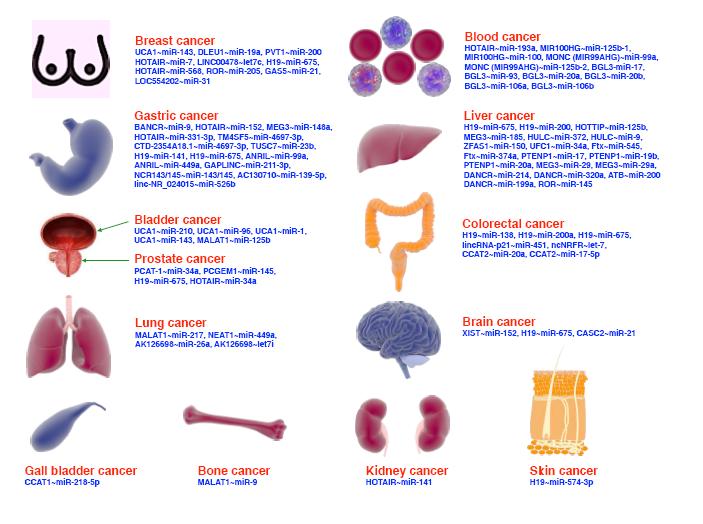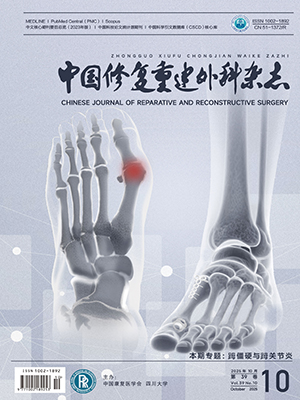| 1. |
Gerdhem L, Vlachogiannis P, Gerdhem P, et al. Cage only or cage with plate fixation in anterior cervical discectomy and fusion surgery-analysis of a national multicenter dataset. Spine J, 2025, 25(5): 947-955.
|
| 2. |
Abdelmalek G, Uppal H, Coban D, et al. Is cervical disc arthroplasty an effective treatment option for patients with cervical spondylotic myelopathy? A matched cohort analysis compared to anterior cervical discectomy and fusion. Spine J, 2025, 25(5): 921-928.
|
| 3. |
Chen L, Zhang T, Chen XY, et al. Anterior cervical discectomy and fusion in treating acute myelopathy caused by Brucella cervical spondylitis: a case series. Ann Med, 2025, 57(1): 2493308. doi: 10.1080/07853890.2025.2493308.
|
| 4. |
Zhao ER, Kamil R, Kaidi AC, et al. Zero-profile stand-alone cages versus traditional cage-and-plate constructs in single and multi-level anterior cervical discectomy and fusion: A propensity-matched analysis using validated fusion assessment methods. Global Spine J, 2025. doi: 10.1177/21925682251329228.
|
| 5. |
Arun-Kumar V, Corluka S, Buser Z, et al. Do osteobiologics augment fusion in anterior cervical discectomy and fusion surgery performed with mechanical interbody devices (polyether ether ketone, carbon fiber, metal cages) and is the fusion rate comparable to that with autograft? A systematic review. Global Spine J, 2024, 14(2_suppl): 24S-33S.
|
| 6. |
Zhai WJ, Liu L, Gao YH, et al. Application of 3D-printed porous titanium interbody fusion cage vs. polyether ether ketone interbody fusion cage in anterior cervical discectomy and fusion: A systematic review and meta-analysis update. Exp Ther Med, 2024, 28(1): 290. doi: 10.3892/etm.2024.12579.
|
| 7. |
Mayer F, Heider F, Haasters F, et al. Radiological and clinical outcomes after anterior cervical discectomy and fusion (ACDF) with an innovative 3D printed cellular titanium cage filled with vertebral bone marrow. Biomed Res Int, 2022, 2022: 6339910. doi: 10.1155/2022/6339910.
|
| 8. |
Aljohani H, Alashkar AH, Abdulazim M, et al. Early dysphagia following anterior cervical discectomy and fusion: a centre experience. BMC Res Notes, 2025, 18(1): 162. doi: 10.1186/s13104-025-07215-1.
|
| 9. |
Hayashi T, Murata S, Iwahashi H, et al. Efficacy of titanium-coated PEEK cages with two blades in anterior cervical decompression fixation: Bone fusion rates and surgical outcomes. J Orthop Sci, 2025. doi: 10.1016/j.jos.2025.03.009.
|
| 10. |
Chang CJ, Liu YF, Hsiao YM, et al. Comparison of stand-alone anchored spacer and plate-cage construct for surgical treatment of multilevel cervical degenerative spondylopathy: A meta-analysis. Global Spine J, 2025. doi: 10.1177/21925682251327599.
|
| 11. |
李玉伟, 李修智, 谷世锋, 等. 自稳定零切迹3D打印人工椎体在颈椎后纵韧带骨化症治疗中的应用观察. 中华医学杂志, 2024, 104(7): 526-532.
|
| 12. |
Ni S, Yang R, Liu S, et al. Biomechanical analysis of a newly designed and 3D printed plate-locking interbody cage: an observational study of finite element analysis. Sci Rep, 2025, 15(1): 3534. doi: 10.1038/s41598-025-88151-9.
|
| 13. |
Dou X, Liu X, Liu Y, et al. Biomimetic porous Ti6Al4V implants: A novel interbody fusion cage via gel-casting technique to promote spine fusion. Adv Healthc Mater, 2024, 13(27): e2400550. doi: 10.1002/adhm.202400550.
|
| 14. |
黄靖, 熊云宇, 周子然, 等. 颈椎前路椎间盘切除融合术中可变角度零切迹椎间融合器与钛板椎间融合器固定的疗效比较. 中华骨科杂志, 2025, 45(4): 205-214.
|
| 15. |
Tang Y, Geng X, Li F, et al. Factors affecting titanium mesh cage subsidence in single-level anterior cervical corpectomy and fusion for ossification of the posterior longitudinal ligament. J Orthop Surg Res, 2022, 17(1): 515. doi: 10.1186/s13018-022-03409-6.
|
| 16. |
Zhao C, Wang S, Zhang J, et al. Facet distraction distance independently predicts cage subsidence following anterior cervical discectomy and fusion. World Neurosurg, 2025. doi: 10.1016/j.wneu.2025.123960.
|
| 17. |
Louie PK, Kumar R, Bansal A, et al. Are variable screw angle change and screw-to-vertebral body ratio associated with radiographic subsidence following anterior cervical discectomy and fusion? Global Spine J, 2025, 15(3): 1582-1591.
|
| 18. |
Sever C, Kilinc BE, Akpolat AO, et al. A retrospective comparative analysis of anterior cervical discectomy and fusion using stand-alone titanium cage versus cage and plate fixation in two-level cervical disc herniation. J Orthop Surg Res, 2025, 20(1): 256. doi: 10.1186/s13018-025-05654-x.
|
| 19. |
He H, Fan L, Lü G, et al. Myth or fact: 3D-printed off-the-shelf prosthesis is superior to titanium mesh cage in anterior cervical corpectomy and fusion? BMC Musculoskelet Disord, 2024, 25(1): 96. doi: 10.1186/s12891-024-07213-7.
|
| 20. |
李玉伟, 王海蛟, 崔巍, 等. 3D打印微孔钛合金人工椎体治疗颈椎后纵韧带骨化症的临床疗效观察. 陆军军医大学学报, 2022, 44(15): 1542-1548.
|
| 21. |
Zhu J, Cui Y, Shen H, et al. Biomechanical performance of a novel zero-profile interbody cage: A cadaveric study. PLoS One, 2025, 20(4): e0317375. doi: 10.1371/journal.pone.0317375.
|
| 22. |
Durand WM, Khanna R, Nazario-Ferrer GI, et al. Revision surgery after single level anterior cervical discectomy and fusion with plate vs stand-alone cage over 2 to 5 year follow-up. Global Spine J, 2025, 15(4): 2014-2019.
|
| 23. |
Wang F, Lu J, Wang B, et al. Is screw position a greater contributor to adjacent segment disease than plate-to-disc distance following anterior cervical discectomy and fusion? BMC Musculoskelet Disord, 2025, 26(1): 297. doi: 10.1186/s12891-025-08285-9.
|
| 24. |
Lee SH, Raad M, Cohen DB, et al. Risk factors for “adjacent-level ossification development” other than short plate-to-disc distance and clinical implications for adjacent-segment pathology. Neurospine, 2025, 22(1): 194-201.
|
| 25. |
Luan H, Liu X, Liu K, et al. Development and validation of a predictive model to evaluate the risk of dysphagia following anterior cervical discectomy and fusion. Global Spine J, 2025, 15(2): 679-688.
|
| 26. |
Kiran S, Khan ZM, Anwar K, et al. A comparative analysis of the clinical and radiological results of a zero-profile device versus conventional cage and plate following single-level anterior cervical discectomy and fusion. Cureus, 2025, 17(3): e80067. doi: 10.7759/cureus.80067.
|




